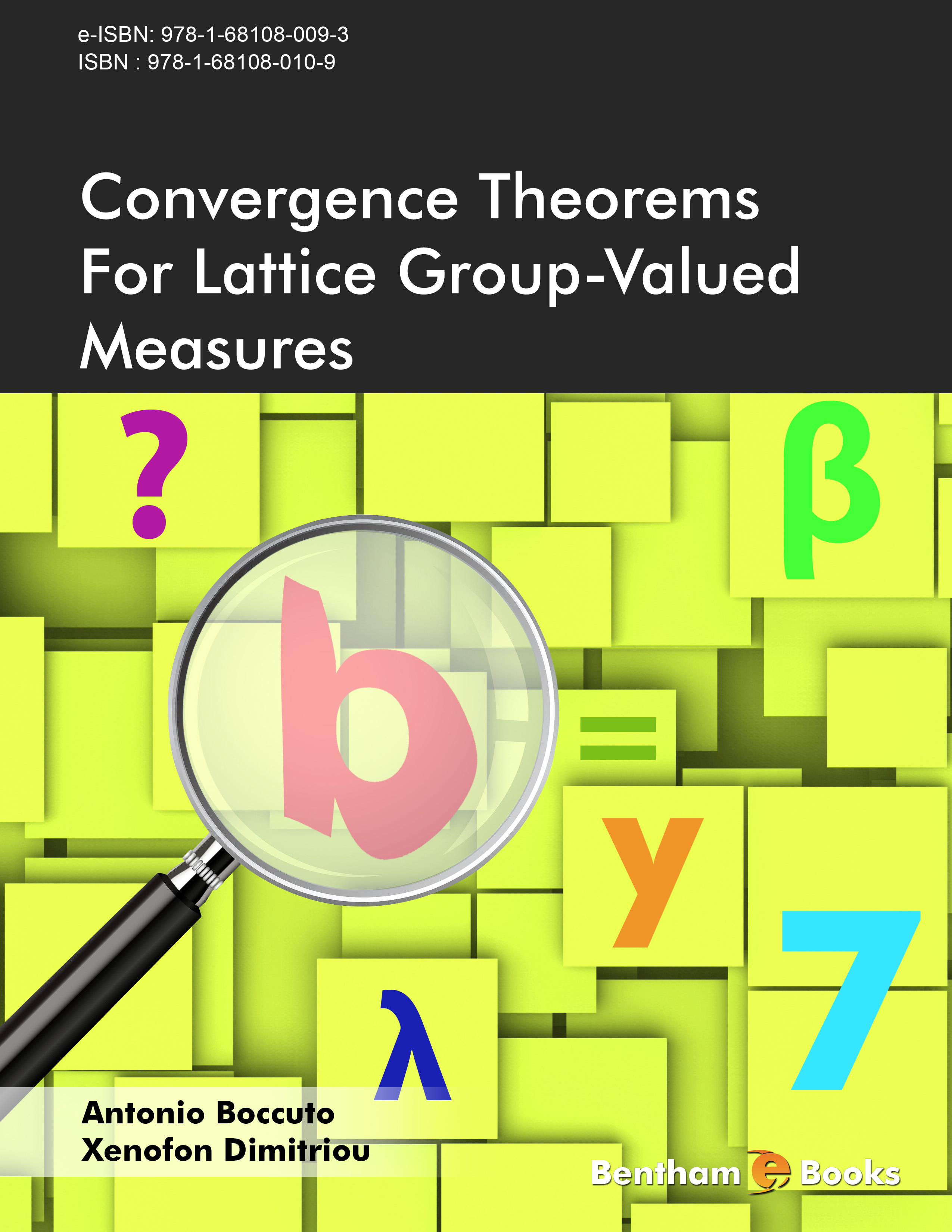One of the topics of wide interest for several mathematicians, which has been successfully widely
studied for more than a century, are the convergence and boundedness theorems for measures, in
connection with properties of integrals, double sequences, matrix theorems and interchange of
limits. Some related results in this area are the Banach-Steinhaus theorem in the operator setting
and integration theory together with its fundamental properties. These topics have several
applications in different branches of Mathematics, like for example topology, function spaces and
approximation theory.
At the beginning, the case of σ-additive real-valued measures and integrals was treated, together
with matrix theorems. These topics have been developed in the literature along several directions.
Firstly, by considering not only countably additive, but also finitely additive measures and even
set functions which are not necessarily finitely additive. Secondly, dealing with measures with
values in abstract structures, like for instance Banach, uniform and locally convex spaces,
topological and lattice groups, and so on. Thirdly, investigating measures defined on algebras
satisfying suitable properties but which are not necessarily σ-algebras, or more abstract structures
like for example MV-algebras, orthomodular posets, D-posets, minimal clans, which have several
applications, for instance to quantum mechanics and multivalued logics.
To prove the main results about these topics, there are two types of techniques: the sliding hump
or diagonal argument, which studies properties of the diagonal of an infinite matrix whose rows
and columns are convergent, and the Baire category theorem. The sliding hump was known just at
the beginning of the last century and was used for the proofs of the first fundamental results about
limit theorems. The technique which uses the Baire category theorem is based on certain
properties of Fréchet-Nikodým topologies. But this method, in general, is not adaptable in the
finitely additive case. So, in most cases, it has been preferable to consider again the sliding hump
method, which has been deeply studied in proving limit and boundedness theorems and also in
matrix diagonal lemmas, which are very useful for these subjects. Furthermore, two procedures to
relate the finitely additive case to the countably additive case have been investigated: the first
deals with Stone-type σ-additive extensions of the original measures, and the second uses
Drewnowski-type σ-additive restrictions of finitely additive measures on suitable σ-algebras.
The novelty of the research of the authors, which is exposed in Chapter 4, is to study limit
theorems in the setting of filter convergence, which is an extension of convergence generated by
matrix summability methods and includes as a particular case the statistical convergence, which is
related with the filter of all subsets of the natural numbers having asymptotic density one. Note
that, in general, it is impossible to expect analogous results corresponding to the classical case,
even for σ-additive real-valued measures, because in general filter convergence is not inherited by
subsequences. However it has been possible to prove several versions of limit, matrix and
boundedness theorems as well as some results about different modes of continuity and
convergence for measures, filter exhaustiveness (extending to the filter setting the concept of
equicontinuity), continuity properties of the limit measure, weak filter/ideal compactness, and so
on. The first chapter contains a historical survey of these topics since the beginning of last century.
In Chapter 2 we deal with the basic concepts and tools used, like for instance filters/ideals, lattice
group-valued measures, filter/ideal convergence in ( l )-groups, and present some fundamental
tool, like for example the Maeda-Ogasawara-Vulikh representation theorem and the Stone
Isomorphism technique. Chapter 3 contains several versions of limit and boundedness theorems
for lattice group-valued measures and some applications to integrals. In the appendix we present an abstract approach on probability theory and random variables in connection with Boolean
algebras, metric spaces, σ-additive extensions of finitely additive functions, various kinds of
convergence in the lattice setting and tools which can have further developments, and we present
some developments of the abstract notion of concept and some applications to Bioassays and
related topics investigated by X. Dimitriou and C. P. Kitsos.
The eBook can be used both as a primer on limit theorems and filters/ideals and related topics, for
postgraduate and Ph. D. students who want to explore these subjects and their beautifulness, and
as a text for advanced researchers, since it exposes some new directions and results, shows some
possibilities of further developments and ideas and includes also some open problems in the area.
This eBook includes several topics and developments of the research, started with the Ph. D. thesis
of Dr. Xenofon Dimitriou, which was brilliantly discussed on 22th December 2011 under the
supervision of Proffs. Nikolaos Papanastassiou and Antonio Boccuto at the National and
Kapodistrian University of Athens.
The first author wants to dedicate the eBook to the loving memory of his parents. His father
Giuliano died on 8th March 2011, while the authors were cooperating on the topics of the research
exposed in this eBook. The second author wants to dedicate the eBook to his parents and to all
who support him.
We want to thank Prof. Christos P. Kitsos for writing the foreword and Prof. Władysław
Wilczyński for having translated from the Russian the papers by Doubrovsky, which the authors
consulted for the preparation of Chapter 1. We thank also the Bentham Science Publishers, in
particular Manager Hira Aftab and all her team, for their support and efforts. We also thank the
referees for their remarks and suggestons, which improved the exposition of the eBook.
Acknowledgement
None declared.
Conflict Of Interest
The authors confirm that this eBook content has no conflict of interest.
Antonio Boccuto
Dipartimento di Matematica e Informatica
via Vanvitelli, 1
I-06123 Perugia
Italy
Email: antonio.boccuto@unipg.it
&
Xenofon Dimitriou
Department of Mathematics
University of Athens, Panepistimiopolis
Athens 15784
Greece
E-mails: xenofon11@gmail.com, dxenof@math.uoa.gr

